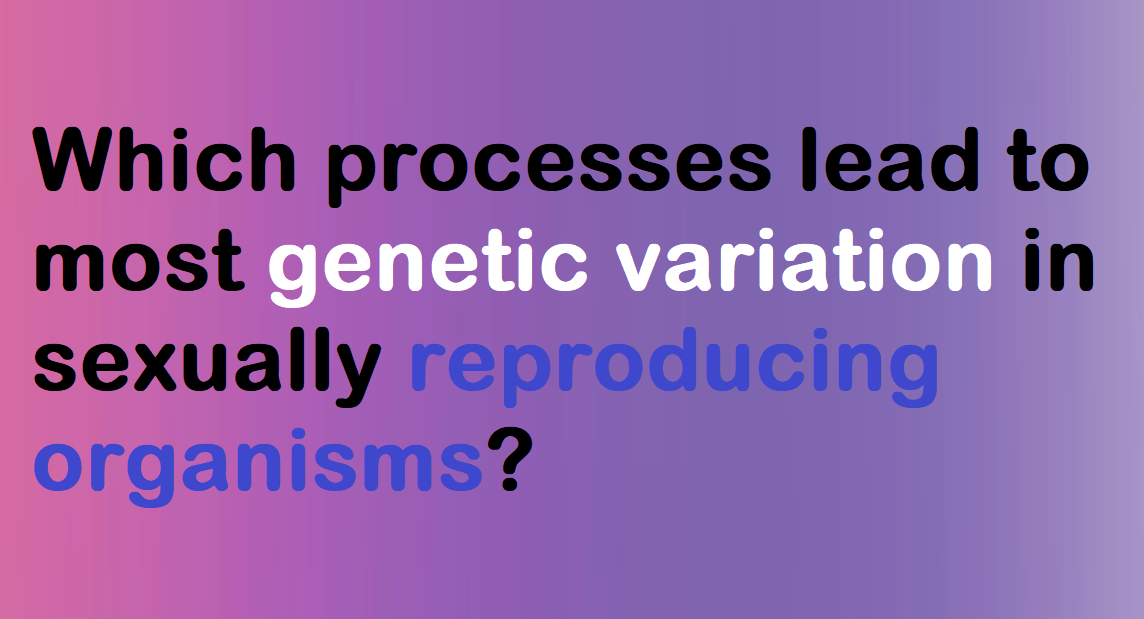Which processes lead to most genetic variation in sexually reproducing organisms?
A: Independent assortment of chromosomes in Meiosis.
B: Crossing over.
C: Random fertilization.
D: A, B, and C are correct.
The correct answer is option D. Options A, B and C all are true.
There are many different factors that can contribute to the amount of genetic variation present in sexually reproducing organisms. One of the most important is the number of times that the organisms reproduce.
This can be affected by things like how often they mate, how many offspring they produce, and how long they live. Another important factor is how often new genes are introduced into the population. This can be affected by things like mutation, migration, and sexual reproduction. Finally, the environment can also play a role in determining how much genetic variation is present in a population.

Genetic Variation
Genetic variation is the difference in DNA sequence among individuals in a population. This variation can be due to mutations, which are changes in the DNA sequence, or to the insertion or deletion of small pieces of DNA. Genetic variation is responsible for the differences among individuals in traits such as height, eye color, and susceptibility to diseases.
The human genome consists of about 3 billion base pairs of DNA. The Human Genome Project, completed in 2003, identified most of the variants that occur in the human population. More than 80% of these variants are found only once in the population, and most of them have no effect on health or appearance.
The remaining 20% of variants are more common and are responsible for many of the differences among individuals. Most of these common variants have a small effect on health or appearance.